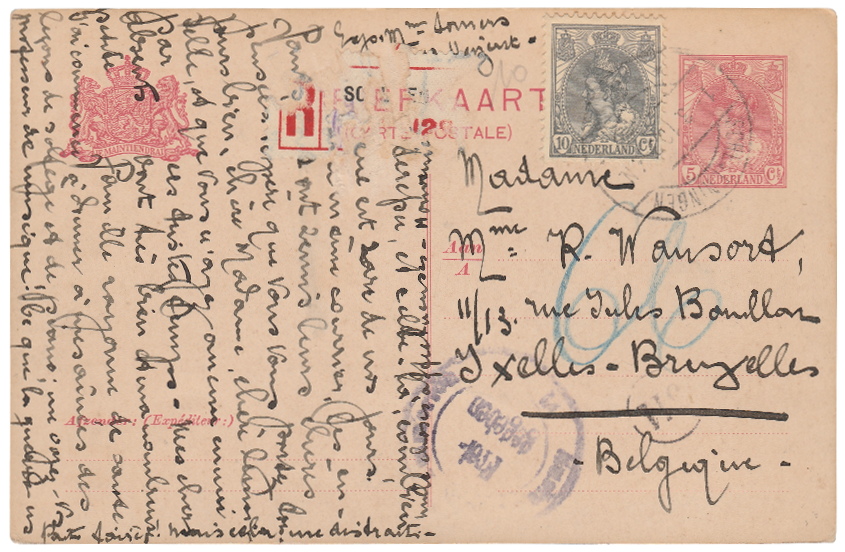In 1906 the Netherlands had seen it’s first charity postage stamps. This was a set of three stamps with the value’s 1 + 1 cent, 3 + 3 cent and 5 + 5 cent. These stamps were sold from 21 December 1906 till 4 January 1907. The stamps themselves were valid for franking till 1 February 1907 and only for domestic mail. All postage stamps that were not sold had to be destroyed by following the rules. However the board of the TBC society in Amsterdam asked the postal authorities if they could have the remaining stock for free to sell to philatelists. This idea was accepted without any problems, since the society asked if they could be cancelled. So the remaining stamps received the large round postmark 31 Jan 1907 (10-12N). The 10-12N stands for the latest time indication possible in a large round postmark on a day, 10-12 PM.
There is large price difference between the postal used sets and the mass cancelled sets. For the postal used set the cat. value is 70 euro while the set with mass cancellation has a cat. value of only 7 euro. The reason for this is that about 1/3 th. of the stamps printed got sold. The rest received the mass cancellation. That it would take the postal authorities some time to cancel these is a fact. The mass cancelled stamps did not came to sale in late April 1907 / early May 1907.
It would take roughly 2 stamps per second to be cancelled. With roughly 2.220.000 stamps remaining this would come down to about a stunning 300 man hours. So more than 6 weeks of cancelling for one person. That it would take a long time can be found back in the history of advertising for selling these mass cancelled stamps but also the fact that at some stage the postal worker made the mistake of placing the wrong date in the postmark 17 APR 1907 (2-3N). This date is only recorded on the 5 cent and by the scarcity of these stamps assumed only a couple of sheets would received this postmark before it was corrected.
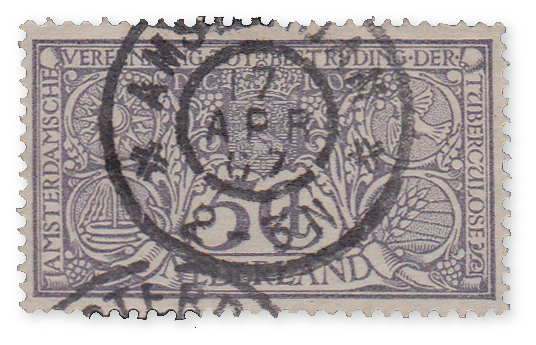
There are no records for this but it can be assumed that the post office of Amsterdam, which had to cancel these stamps did not placed a person on it for six weeks straight. It is more likely that it was done in the quieter hours of the post office.
Many collectors around the world, specially non Dutch orientated, do not know this and sell or buy these sets for a x percentage of the 70 euro cat. value.
Beside the normal readable strikes there are also strikes that are so difficult to pick from truly used examples.
These strikes have placed so decentred that stamps are recorded with corner strikes or partial readable strikes were the date is barely till not visible. The collector has to be careful for this and always try to find the indications of the large round postmark of Amsterdam, the date 31 Jan 1907 or a part of that and of course the time 10-12N. Below are some sheet parts showing how decentred these postmarks were placed.


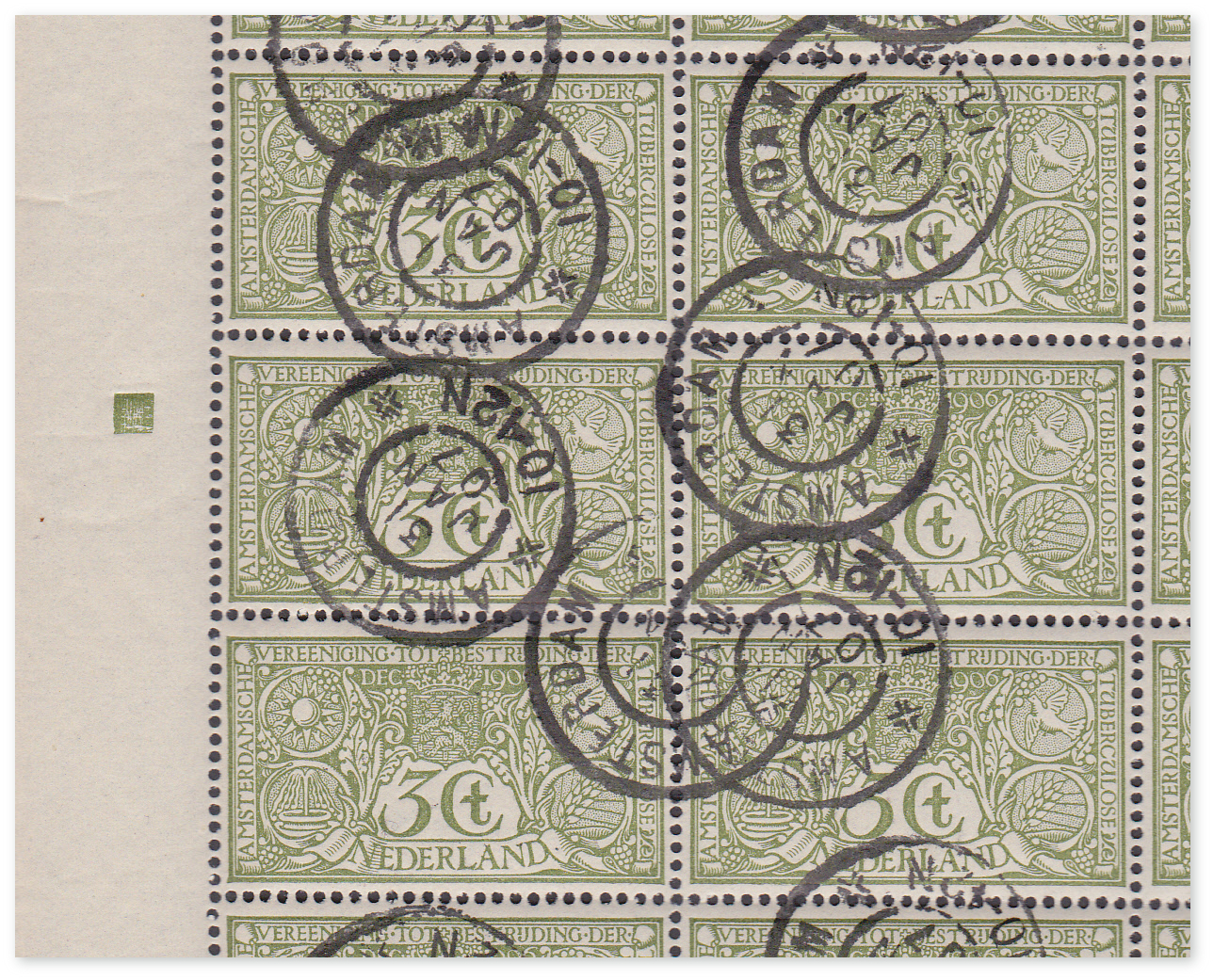
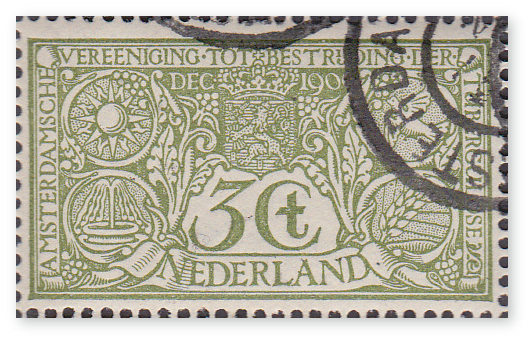
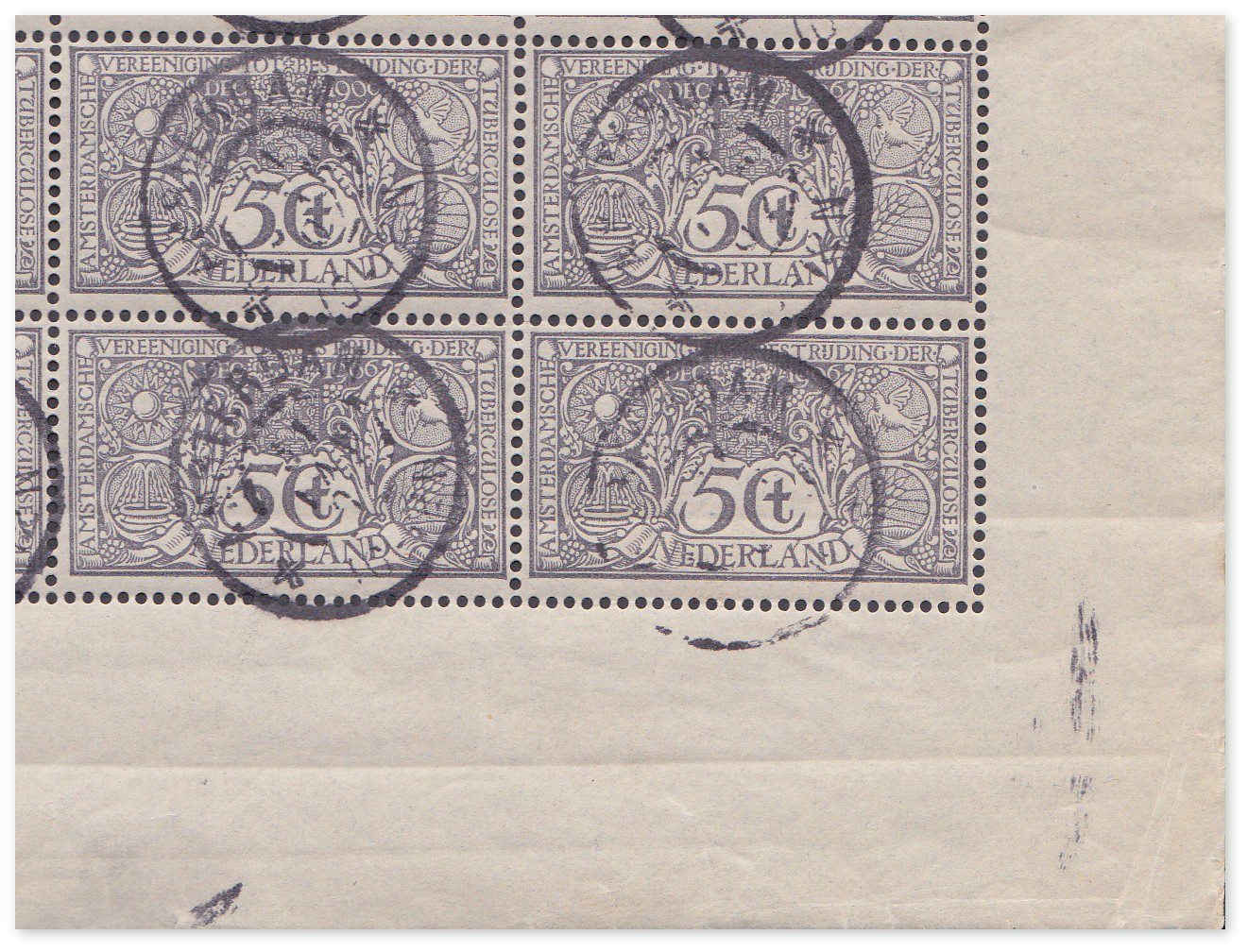
So watch out next time you want to buy or sell these stamps and check them first if they are truly postal used examples!



